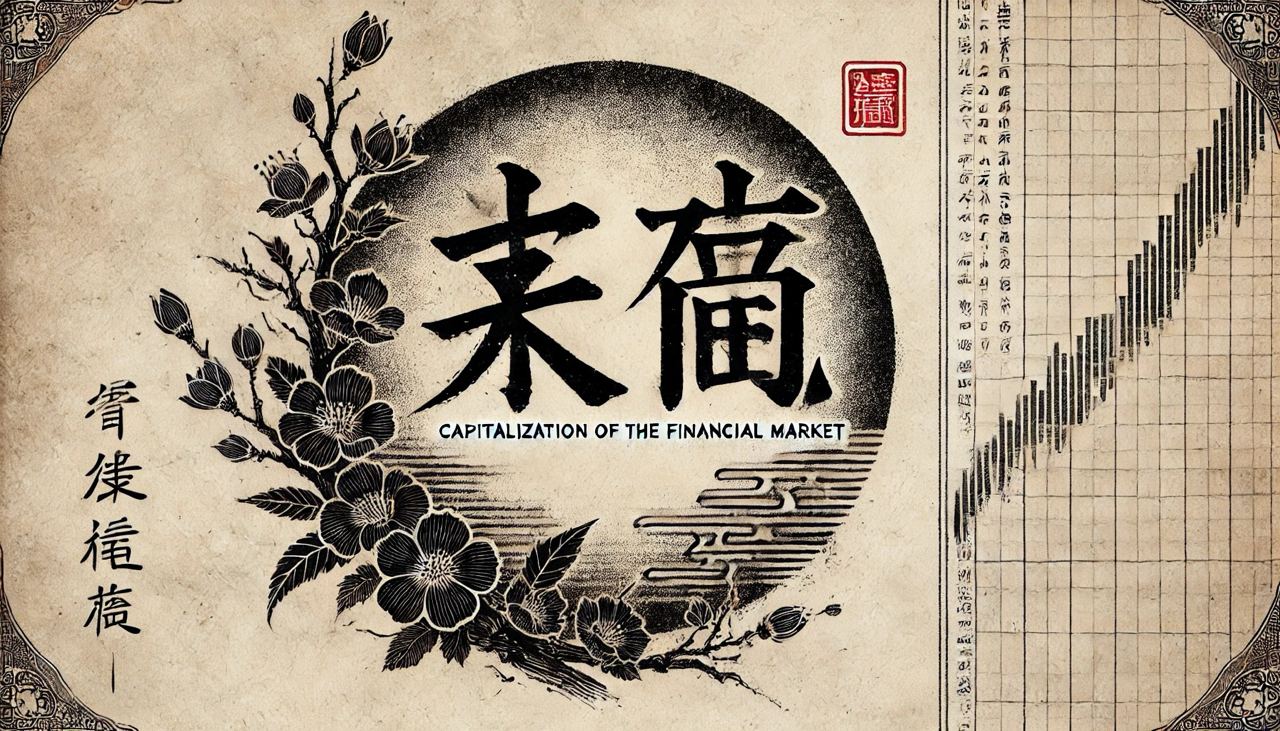Learn Trading for Free and Without Registration
An Online Glossary to Study Trading Independently
Capitalization in Financial Markets
Capitalization in Financial Markets: What It Is and How It Affects Investment Decisions

Introduction
Capitalization is one of the key indicators used to assess the state of financial markets. It reflects the total value of all assets traded in the market and provides insight into the overall liquidity, stability, and attractiveness of a particular financial sector.
In this article, we will cover:
✔ What capitalization is and its different types;
✔ The capitalization of major global markets (Forex, stock market, cryptocurrencies, gold, and other assets);
✔ How investors can use capitalization in market analysis;
✔ The impact of capitalization on trading strategies.
1. What Is Capitalization?
Capitalization refers to the market value of all circulating assets. It is calculated as the product of the current asset price and the total number of available (or issued) units.
Capitalization formula:
Market Capitalization=Asset Price×Total Number of Assets in Circulation\text{Market Capitalization} = \text{Asset Price} \times \text{Total Number of Assets in Circulation}
Capitalization plays a crucial role as it shows how significant a market or specific asset is. Generally, the higher the capitalization, the more stable the market is and the harder it is for large players to manipulate.
2. Types of Capitalization in Financial Markets
Capitalization differs based on the type of market:
🔹 Forex Market Capitalization – measured through trading volumes, as currencies do not have a fixed market capitalization.
🔹 Stock Market Capitalization – the market value of all publicly traded shares.
🔹 Cryptocurrency Market Capitalization – the total value of all issued tokens or coins at the current market price.
🔹 Commodity Market Capitalization (e.g., gold) – depends on supply levels and current prices.
🔹 Capitalization of Primary and Secondary Markets – includes the value of IPOs, bonds, and other financial instruments.
3. Forex Market Capitalization
The Forex (Foreign Exchange) market is the largest financial market in the world. Unlike stock exchanges, Forex operates as a decentralized network of banks, brokers, and financial institutions.
📌 The average daily trading volume in the Forex market ranges from $6 to $8 trillion (according to the Bank for International Settlements – BIS).
Factors Affecting Forex Capitalization:
- Global economic factors (inflation, central bank interest rates, geopolitics);
- Speculative trading and high liquidity – most traders use leverage, increasing trading volumes;
- Central banks and multinational corporations – major players that significantly impact market movements.
Forex does not have a fixed capitalization, but trading volume serves as a key indicator of market activity. The higher the volume, the more liquid and stable currency exchange rates tend to be.
4. U.S. Stock Market Capitalization
The U.S. stock market is the largest in the world, with its capitalization measured by the total market value of all traded stocks.
📌 The capitalization of the U.S. stock market in 2024 is approximately $46 trillion (according to the World Federation of Exchanges).
🔹 S&P 500 (500 largest U.S. companies) – over $40 trillion.
🔹 NASDAQ (technology sector) – around $20 trillion.
🔹 Dow Jones Industrial Average – approximately $10 trillion.
Factors Influencing Stock Market Capitalization:
✔ Macroeconomic conditions (Federal Reserve policies, GDP, inflation);
✔ Corporate profitability and revenue growth;
✔ Speculative trading and market manipulation by large investors;
✔ IPOs and new companies entering the market.
Stock market capitalization reflects investor confidence in the economy. If indices rise, capitalization increases, signaling positive market sentiment.
5. Cryptocurrency Market Capitalization
The cryptocurrency market is one of the most volatile and speculative. Its capitalization changes rapidly due to high sensitivity to news and investor sentiment.
📌 The total cryptocurrency market capitalization in 2024 is around $2 trillion.
🔹 Bitcoin (BTC) – approximately $900 billion.
🔹 Ethereum (ETH) – over $450 billion.
🔹 Tether (USDT) – around $100 billion.
Factors Influencing Cryptocurrency Capitalization:
✔ Regulatory developments (new laws, restrictions, taxation);
✔ Institutional investments (funds, corporations);
✔ Technological advancements (blockchain upgrades, new features);
✔ Supply and demand fluctuations.
The higher the cryptocurrency market capitalization, the more stable the market. However, low-cap altcoins remain highly vulnerable to price manipulation.
6. Gold and Other Commodity Market Capitalization
Gold has always been considered a safe-haven asset during economic uncertainty.
📌 The total market capitalization of gold is around $13 trillion (according to the World Gold Council).
🔹 Global gold reserves – approximately 205,000 tons.
🔹 Gold price per ounce in 2024 – around $2,000.
Factors Affecting Gold Capitalization:
✔ Economic crises (gold prices rise during financial instability);
✔ Monetary policy (higher inflation drives demand for gold);
✔ Central bank reserves (buying or selling gold reserves).
Gold is often used for hedging against financial risks as its capitalization remains relatively stable in the long run.
7. How to Use Capitalization in Market Analysis?
📊 1. Determining Liquidity
Higher capitalization markets tend to be more liquid, reducing the likelihood of extreme price fluctuations.
📉 2. Analyzing Investor Sentiment
Increasing stock market capitalization suggests investor confidence, while declining capitalization indicates a shift toward safer assets.
📈 3. Selecting Assets for Long-Term Investment
Companies with high market capitalization (blue-chip stocks) are less likely to face bankruptcy.
📌 Key Insight:
Capitalization serves as a crucial market indicator, helping investors assess risk and potential returns.
8. Conclusion
✔ Capitalization is a fundamental metric that defines the strength of financial markets.
✔ The higher the capitalization, the more stable and liquid the asset.
✔ Understanding capitalization helps traders and investors make informed decisions.
📌 Capitalization is more than just a number—it’s a tool for analyzing global financial trends.


